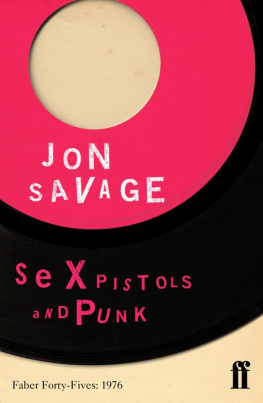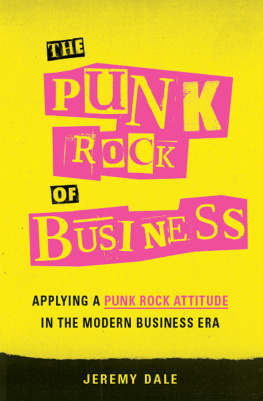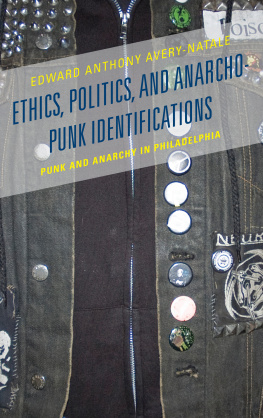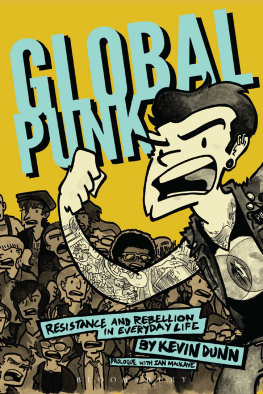
Punk USA
The Rise and Fall of Lookout Records
Kevin Prested
First printing, December 1, 2014
All text is Kevin Prested, 2014
This edition is Microcosm Publishing, 2014

Microcosm Publishing
2752 N Williams Ave
Portland, OR 97227
In the Punk Rock series
For a catalog, write or visit
MicrocosmPublishing.com
ISBN 978-1-62106-612-5
This is Microcosm #159
Edited by Joe Biel, Tim Wheeler, and Lauren Hage
Cover by Meggyn Pommerleau
Photos courtesy of Frank Portman, Dan Schafer, and Chris Appelgren.
Distributed worldwide by Legato/Perseus and in England by Turnaround.
This book was printed on post-consumer paper by union workers in the United States.

Foreword
On April 10th 2010, the musical American Idiot opened on Broadway at the St. James Theatre. The musical was created by the band Green Day, based on their 2004 album of the same name; it expanded on the albums concept, including a recurring character called Jesus of Suburbia. It connected two generations of fans and asserted Green Days return to form after their 1994 major label debut, Dookie. On its release, Dookie hit number two on the Billboard Charts and went on to sell over twenty million copies. The New York Times had chided that its pop sound only remotely resembled punk music. But it was that blend of pop and punk that spread awareness about the previously marginal, underground scene in the East Bay to the far corners of the globe.
During the end of the 1980s, punk was stubbornly hobbling on one leg. The first generation was over and punk in the U.S. had never gotten as popular as it had been in England. Bands were continuing to tour in broken down vans along the same trade routes that pioneers Black Flag had established. Young punks still had feelings to express to each other and needed enclaves to communicate them in. But the institutions that had united them appeared to be dissolving. By 1986, The Dead Kennedys dissipated while their singer fought an obscenity trial for artwork used inside their album Frankenchrist. By 1991, underground stalwart SST Records, who had brought Black Flag, Hsker D, and the Minutemen to the national limelight, was caught up in an extensive trademark lawsuit over Negativlands album U2. DIY venues closed as fast as they had opened and punk shows were relegated to rental halls. Punk appeared to be on the verge of becoming a historical footnote as its participants faded or turned into crossover metal bands.
Green Days sudden stratospheric success did more than line the pockets of the band members. It raised the tide for U.S. punk bands of all stripes. A sprawling network of kids with fanzines, dirty venues, and closet record labels become known around the world. Even kids in the most isolated suburbs with little access to their own punk subcultures found out about Green Day and through them, a larger movement.
Green Days story started back in 1989 when the teenaged band met David Hayes and Larry Livermore, founders of then-tiny record label Lookout Records. Lookout released Green Days first two albums, which went on to put the label on the map. By the mid-90s, pop punk fans hungrily devoured all of the labels other in print records as they sought more bands like Green Day. Bands like Screeching Weasel, Operation Ivy, and The Mr. T Experience were launched into success by this association, with many more reaping the benefits.
Green Day and Lookout offered something much more than just sound: they opened an accessible avenue into underground music. The relationship between the band and the label offered kids a way to discover music that was never going to be on the radio but shared an ethos and aesthetic that might otherwise have stayed obscure to certain scenes in California. Lookouts presentation implied a participatory culture, something young people across the world craved, starting bands of their own inspired by this democratic aesthetic. Looking at many of their products, it felt like you could probably make a record too. And while Green Day was mainstream, Lookout was not, so it felt like you had discovered something special that was your own. A new wave of punk was born.
It was an opportune time for the previously unnotable San Francisco Bay Area scene to take the limelight. And the punk fanzine stalwarts at Maximum Rocknroll were there to document it all.
I began work in mid 2010 on what would become Punk USA after being a big fan of Lookout Records for close to twenty years. I was motivated to create a book that I would want to readthe ultimate history of the label, along with the backgrounds and stories of every band and release. Over the next two years and thousands of hours of interviews and writing, I came close, exceeding 178,000 words. I have always been one for more details instead of less, so I put great emphasis into covering every detail of each release and band in chronological order. As I began to edit this epic story, I realized how much needed be cut for the benefit of the work as a whole. So I shifted gears and relaxed a bit, and as a result this book focuses specifically on the story of the label.
Huge chunks ended up being trimmed. As much as I love Brents TV or Surrogate Brains, the casual reader might not be interested in five or six pages of writing on each of these 7 releases. While I set out to write the entire story of the label and its releasesand I think I succeededwhat you hold here is the theatrical cut, with about half of the original material.
I apologize to anyone who wanted to know the ins and outs of the recording of the debut Crumbs album or what the backstory was on the Spitboy 7. I feel your pain! But I think what you are about to read will function better as an entertaining ride through capturing the world of Lookout Records. You can find the deleted scenes on my site punk-usa.typepad.com, which will duly serve the completest nerds with your quests for the ultimate overview. Also, as much as I strove to write this book in complete chronological order, due to the editing process, some pieces of the story may lap over a few months here and there, so please bear that in mind when reading. All of the interviews are original and exclusive to this book. Thanks for taking the time to pick this up, and I hope you find it a fun ride.
Introduction
by Jesse Townley AKA Jesse Lucious
From the first time I spoke to David Hayes, to the disappointment and frustration of watching the label that had everything lose it all, Lookout was never boring.
As a fan of most of the bands on the label, a member of two of them, and a former employee, its an understatement to say that I have a lot of mixed emotions about Lookout Records. Frustration at lost opportunities and loss of trust are two themes that run through conversations with other ex-employees and ex-Lookout bands.
As ex-employees, we all knew and liked Lookout before we worked there, so a sense of betrayal at how much went wrong so quickly for so many lingers. Even now, years after Green Day and Operation Ivy pulled their back catalogs and made Lookout a moribund catalog label, one can hear harrowing tales if you hit the right bunch of people at a backyard party.
Next page









